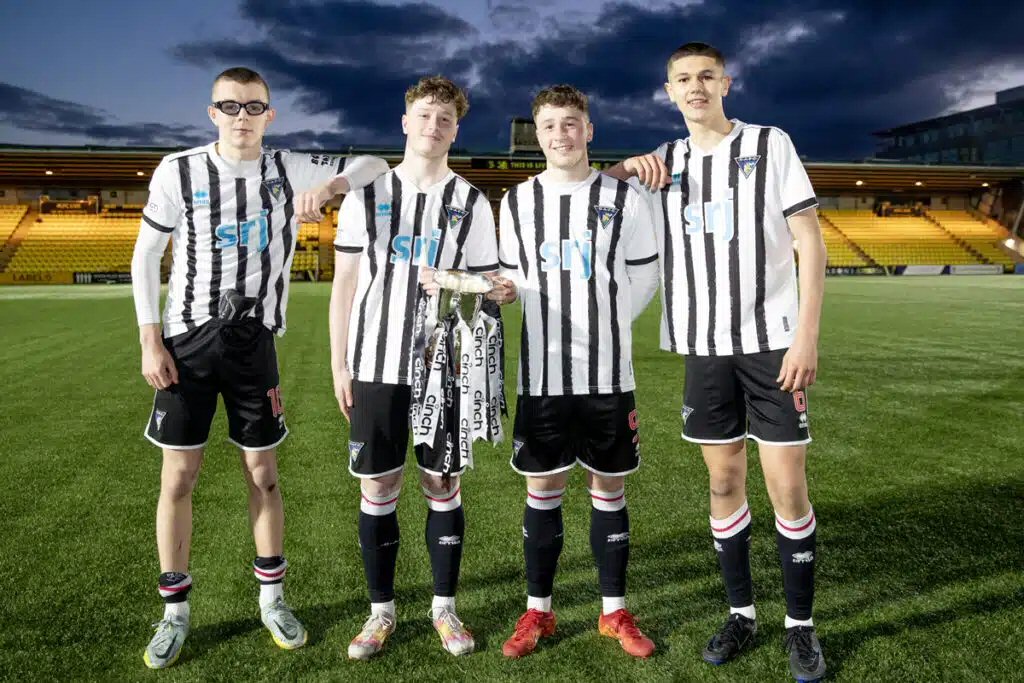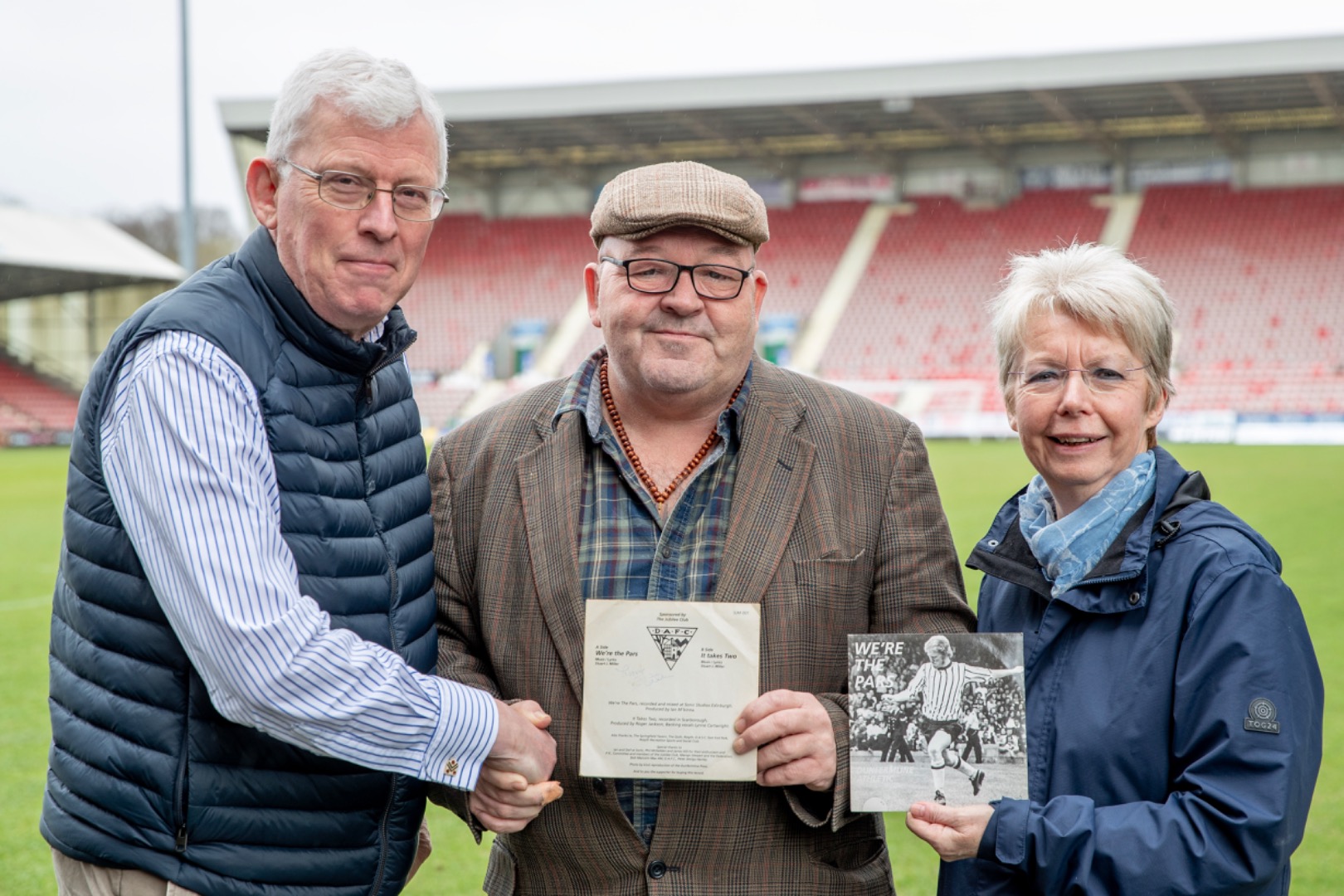Archives | George Miller 1972-1975
After taking over at East End on 25th February 1972, Miller helped the team gain ten points from as many matches but it prove to be too little, too late.
George Miller was the last Dunfermline manager to lead his team to victory at Ibrox when in only his ninth game in charge the Pars defeated Rangers 4-3 on 28th April 1972.
Born in Larkhall on 20th May 1939, George Miller was signed by Dunfermline from junior side Royal Albert a few days short of his twentieth birthday. Manager Andy Dickson was actually interested in the Albert`s goalkeeper but was so impressed by the left-half that he signed them both.
Miller made rapid progress and after only a handful of reserve matches was promoted to the first team on 26th August 1959 for a League Cup tie against St. Mirren. When Jock Stein took over towards the end of the season George was well established in the side and under the guidance of the great man became one of the first players in Scottish football to operate in the role of `sweeper`.
The Scottish Cup success of 1961 gave Dunfermline the opportunity to play in Europe and Miller revelled in it, his thirteen consecutive European appearances including some of the greatest games in the club`s history. The most important of his 24 goals for the Athletic came in the Fairs Cup tie against Everton at East End Park, when he hammered home a low twenty yard shot to level the scores on aggregate and set the Pars up for a famous victory.
An outstanding defender, George capped by the Scottish Under 23`s against the British Army in 1962 and for the Scottish League against the League of Ireland two years later. Despite being appointed captain by Willie Cunningham, he felt that after five years it was time to move on and, after 239 appearances for the Pars, Miller was transferred to Wolves on 28th October 1964 for a fee of £28,500.
A disappointingly short stay in England was followed by spells with Hearts (whom he captained in the 1968 Scottish Cup Final) and Falkirk, where the manager was his former Dunfermline teammate Willie Cunningham. Encouraged by him to take up coaching, George`s first managerial opportunity arrived within a few weeks as the Dunfermline directors offered him the chance to rescue the club from relegation.
After taking over at East End on 25th February 1972, Miller helped the team gain ten points from as many matches but it proved to be too little, too late. With the Athletic on the rebound from a serious financial crisis, there was absolutely no money available so George was forced to rely on a crop of talented teenagers produced by the club`s excellent youth set-up.
The Pars gained promotion in 1972/73 as the highest scoring side in Britain but it`s fair to say that the team never realised its full potential. Despite some tremendous results and performances, inconsistency was a major problem and the club lacked the funds to be able to bring in one or two more experienced players to help the youngsters to progress.
A disastrous loss of form in the latter half of 1974/75 saw Dunfermline miss out on the inaugural Premier Division and, unable to offer Miller a suitable deal, he resigned on 2nd September 1975 to return to Falkirk. He stayed there only a year before having a spell outside the game running a couple of betting shops but gave that up to oversee the Hamilton Accies lottery. He subsequently became the club`s Commercial Manager, a position he held for a number of years.
Sadly George died on Boxing Day 2008.
Related Stories
views: 772



